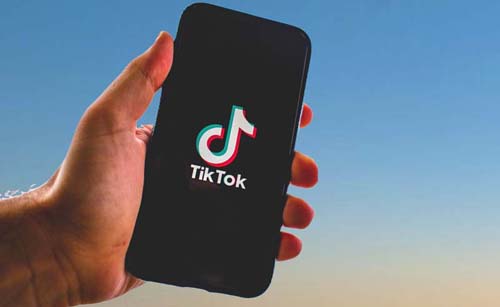
By AnandPrthasarathy
Last week the US House of Representatives voted overwhelmingly, 352 to 65, in favour of a bill that, if passed, would ban the Chinese short format video app, TikTok unless its American operation is sold to a non-Chinese company. The non-partisan bill was co-led in the house by a Republican, Mike Gallagher and a Democrat, Indian American Raja Krishnamoorthi.
It is not yet certain if the bill will be taken up and, if so, passed by the US Senate, but if it is, President Biden is expected to sign it into action.
American TikTok creators, many of whom became millionaires with their viral videos on the platform, are lobbying hard on behalf of the app. But as lawmakers agonise over the decision that would affect 150 million users in the US, key players in their domestic media are pointing them at India which banned TikTok entirely for all of its 200 million users in the country almost 4 years ago, along with 58 other Chinese-origin apps, a number that has since grown tenfold to over 500.
Within a day of each other, the Wall Street Journal and the New York Times carried detailed stories last week titled, respectively: “India's TikTok Ban Is a Cautionary Tale for the U.S.” and “India’s TikTok Ban: What Lessons Does It Hold for the U.S?”
CNN had its own take on what happened when India turned off TikTok. It concluded, “It is possible to survive and thrive in a TikTok-less world. Just ask the planet’s most populous nation.”
The consensus seemed to be: yes, lay users and, more importantly, the TikTok video creators will be rattled and will scream, but ultimately, they will settle for a substitute. Nikhil Pahwa, the Delhi-based analyst and founder of the tech website MediaNama, who seems to be the go-to guy for US media, is quoted by two of these three outlets and points out that TikTok’s India crisis became a multi-billion dollar opportunity for competitors to grab those 200 million users who were suddenly stranded.
There were a few Indian avatars of TikTok, but mostly, they could not compete with the global biggies: Meta launched Reels on Instagram and, in a limited way, right inside Facebook, while Google offered Shorts on YouTube. The gap left by TikTok was pretty much filled in India over the last two years—by these aspiring clones, but not by anything touching TikTok’s unique customization and localization for every user—what Pahwa calls its 'secret sauce’ of an algorithm.
Still, in part because of filling the void left by TikTok, YouTube (with 500 million) and Instagram (with over 350 million) have the world's biggest user bases in India today, and these are both twice the number of US users.
Are privacy and security the key issues?
In the US and India, as in the dozen other nations putting restrictions or bans in place, security and privacy have been stated to be the main concerns of governments. With respect to TikTok, whose parent company, ByteDance, they say, might conceivably succumb to pressure from the Chinese government to cough up user data that the app gleans in its multiple geographies from its 1 billion active users worldwide.
For this reason alone Australia, Belgium, Canada, France, New Zealand, Taiwan and UK, as well as key organisations of the European Union, have banned the use of TikTok by their respective government employees. In the US, the federal government and some 34 of the 50 states have banned TikTok for its employees and in some cases for their contractors.
Afghanistan, India, Nepal and Pakistan have banned TikTok for all users, including lay users. Swinging between an outright ban and one limited to use by the government, the US may offer an audacious third option: Cut your ties with China if you want to operate in our country.
Will ByteDance—pardon the pun—bite?
For a more technical take and one less enmeshed in geopolitics involving China, as the TikTok issue is in both India and the US, I turned to the journal Scientific American which last week headlined: “Banning TikTok Would Do Basically Nothing to Protect Your Data”
It quotes Kate Ruane, attorney at the nonprofit civil rights organization, the Centre for Democracy and Technology (CDT): “Banning access to one application does not create safety or security for Americans’ data from China or from any other country. So many applications and social media services collect our data and sell it or leak it all over the world, all the time.” TikTok, she adds, is ‘barely a drop in the bucket”.
A Singapore site devoted to government Technology, GovTech, suggests soberly that mobile apps like TikTok typically operate within a sandboxed environment, meaning they are restricted to their own operating space and data, with limitations set on what they can access. Modern operating systems and routers have built-in firewalls and other security measures that prevent unauthorised network scanning or interactions. The article concludes: “That said, the chances are low… but never zero”.
That low chance is what India was not prepared to take—and the US may yet decide not to take—when it comes to national security.
For the rest of us, as the Scientific American article underlines, in a telling quote from a NATO document, when we use “free apps,” we are still paying with marketable data about ourselves, our habits, our tastes, our friends, etc., and this can leak from the unlikeliest devices.
“Information can come from your phone, smart speaker, connected car, dating app, front door camera or any other Internet-connected device. This is precisely why you can use a social media service such as Facebook or Instagram without paying an upfront cost. But those services aren’t truly free. You’re paying in data.”
The Americans said it better, if less grammatically: “There ain’t no such thing as a free lunch!”
You said it right, Pardner.
This has appeared in New India Abroad